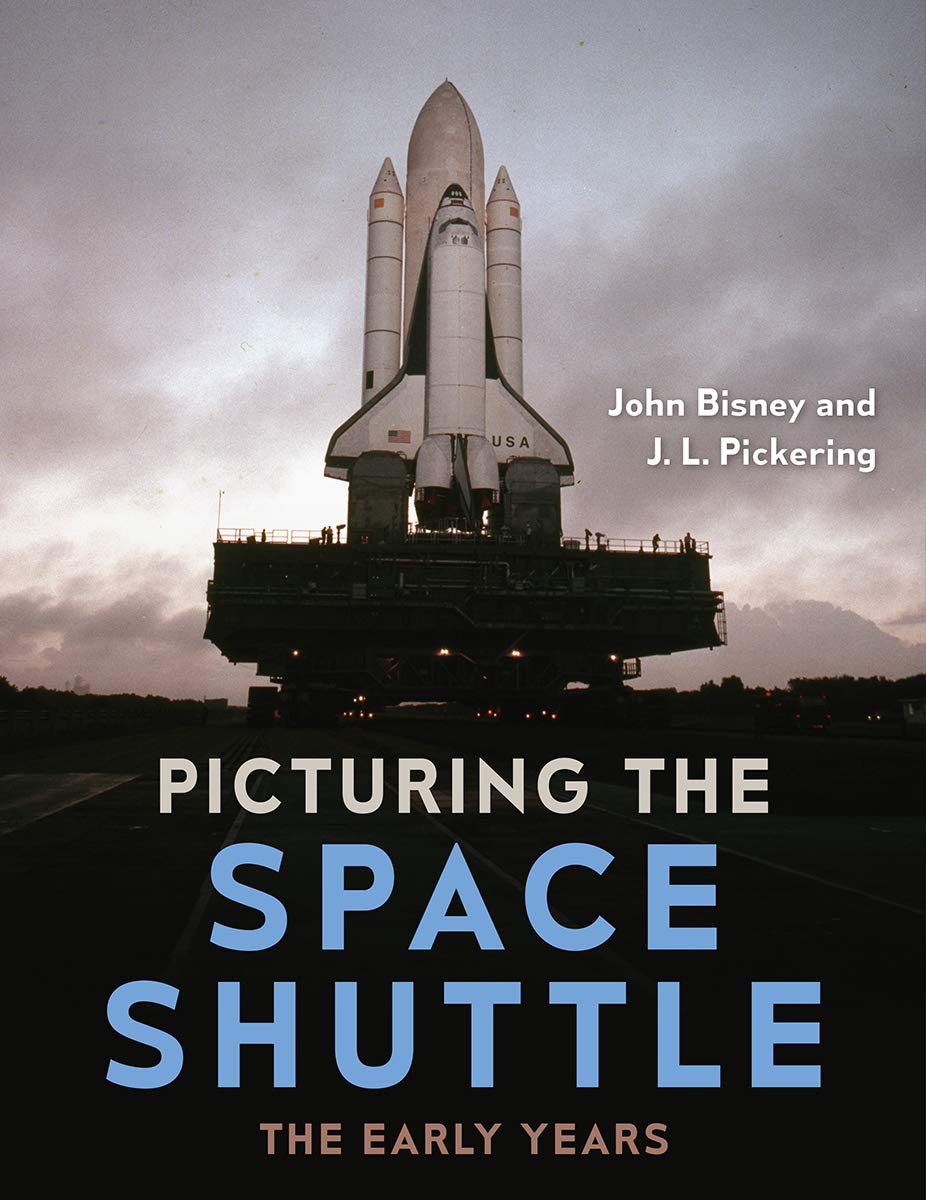 Story: The authors – both journalists who covered NASA from the inception of the shuttle program to its completion – trace the history of the space shuttle from the earliest (and in some cases most fanciful) proposals through the first four test launches, in a huge number of often previously unpublished photos and accompanying text.
Story: The authors – both journalists who covered NASA from the inception of the shuttle program to its completion – trace the history of the space shuttle from the earliest (and in some cases most fanciful) proposals through the first four test launches, in a huge number of often previously unpublished photos and accompanying text.
Review: If ever there was a coffee table book aimed squarely at this reviewer, Picturing The Space Shuttle: The Early Years is it. While it tells a story of which some of the broad strokes are already fairly well known, the granularity of detail combined with the spectacular photography is what sets this volume apart. It’s a vivid trip back to a point in history when we had sent astronauts to the moon and back, and the universe – or at least so the NASA promotional material said – was ours for the taking. All America had to do was build a next generation spacecraft of unprecedented complexity.
Picturing The Shuttle: The Early Years traces that spacecraft from artists’ conceptions on a page to its four test flights (after which NASA declared the shuttle “fully operational” – translating roughly to “you can now pay us to launch a satellite in this vehicle”). Long before the shuttle’s inadequacies were laid bare, the 1970s were a time when the shuttle was the future: amazing and distant, and forever in the works. Once the Nixon administration set NASA on a path toward the shuttle, supposedly to improve the economy of access to space through a partially reusable launch vehicle, getting the shuttle flying was almost NASA’s only goal, even though one more moonshot, the entirety of the Skylab program, and the Apollo-Soyuz Test Project still laid ahead. Part of the problem was that the technology needed to build the shuttle didn’t exist yet, especially where the insulation to protect the shuttle from the heat of reentry was concerned.
A great deal of the book is spent in this period: shuttles were under construction, the technology they would need to go into space was still a work in progress, and the schedule and the budget were both slipping constantly. Despite knowing all this in retrospect, it’s fascinating to revisit what a big project the shuttle program was across the country, and the hopes everyone involved had for it. This includes NASA at an institutional level, continuing to sell the public (and prospective launch clients) on the notion that the shuttle would be taking to space on an almost weekly basis. The book chronicles this, but offers no criticisms in hindsight. (Not saying that no criticism is due, but there are plenty of books and blogs out there to offer it.)
A lot of time is also spent with the new class of astronauts inaugurated in 1978, including the first women and minorities to gain a foothold in the American space program. Among these 35 new candidates were nearly the entire final crew of Challenger, and their faces and names are recurring characters for much of the remainder of the book, mercifully without any foreboding comment. Toward the end, there is a singular mention of the future Challenger crew’s impending fate, but that fate is four years after where this book ends, and presumably another volume awaits to chronicle their stories, among the other 20 flights that happened between STS-4 and STS-51L. As with the lack of criticism of the shuttle program in hindsight, I appreciate this attempt to keep the book’s narrative flow “in the moment”, not peppering it with portentious reminders that not everyone makes it out of the shuttle program alive.
It’s that “in the moment” quality that makes this such a fascinating read. It’s a nice little time machine taking you back to an era that just happened to coincide with the formative years of my young life, where the space shuttle was surely just the beginning of far more magnificent things to happen in space. This book is not here to expound upon the shuttle’s flaws, it’s a time capsule of a period when – for reasons both valid and questionable in hindsight – it had been decided that the shuttle was the entirety of the American space program. It was the future, because it had been decided at an administrative level that it was the only future, and it was the only thing in space to look forward to; even wonders yet to come such as the yet-to-be-named Space Telescope (as in Hubble) and Jupiter Orbiter-Probe mission (later christened Galileo) were beholden to the shuttle for their rides into space. You really had no choice but to root for the shuttle.
From my vantage point as a kid just beginning his obsession with space and spaceflight, that wasn’t a bad thing. By not loading the book down with criticism that has 20/20 hindsight, the authors rekindle that sense of “wow!” that accompanied every major milestone. Having an entire coffee table book of reminders of that sense of awe is a thing to be savored.
Year: September 7, 2021
Authors: John Bisney, J.L. Pickering
Publisher: University of Florida Press
Pages: 240
